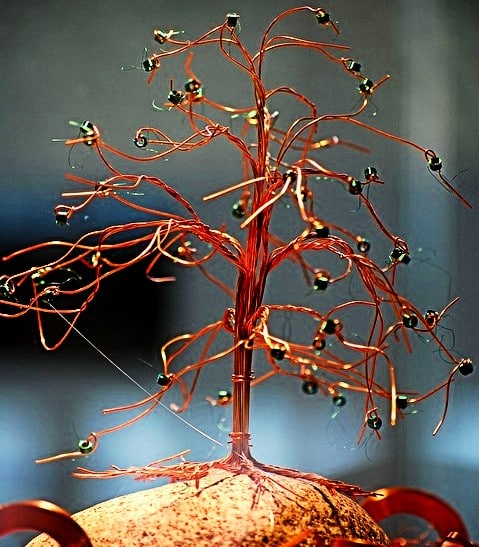H&M Partners with Rondo Energy to Revolutionize Textile Sustainability
H&M (Hennes & Mauritz) Group is partnering with Rondo Energy to explore heat storage technologies to decarbonize its textile supply chain. The global fashion retailer, a sensation among all age groups for its chic, street style, and edgy designs, believes in sustainability. They are committed to making fashion and design eco-friendly. Will this partnership help H&M take bigger strides to achieve net zero?
Let’s discover how this partnership can transform their textile operations.
The Partnership is Weaving Sustainability into Style!
According to the press release rolled out on June 19, H&M is joining Rondo’s Strategic Investor Advisory Board (SIAB). The former would invest to support the expansion of Rondo’s operations and storage projects. Furthermore, the collaboration aims to replace fossil fuels with Rondo’s Heat Batteries. These energy-efficient batteries can transform renewable electricity into continuous, high-temperature heat and power essential for large-scale textile production.
In May, Rondo and SCG Cleanergy launched Southeast Asia’s first heat battery and the world’s first heat battery for a cement plant. They have established large-scale production in Thailand and plan to scale up to 90 GWh annually.
Notably, Southeast Asia is a global textile industry hub, where companies like H&M Group strive to impact people, economies, and our planet positively. Rondo, with its growing presence and expertise in the region, is well-positioned to support H&M Group’s efforts.
Eric Trusiewicz, CEO of Rondo Energy, said
“Rondo is thrilled to be working in partnership with H&M Group to explore how our technology can be of use in their supply chain, and to have H&M as an investor and member of our Strategic Investor Advisory Board.”
READ MORE: Walmart Looks at Innovative Carbon Capture to Turn CO2 Into Clothes
Rondo’s Heat Battery- the “Brave Little Toaster” Revolutionizing Textile Decarbonization
The Rondo Heat Battery is described as a “brave little toaster”. Essentially the battery is a pile of bricks with insane power to decarbonize the expansive textile sector. It is an innovative fusion of age-old techniques and modern automation to convert renewable energy into power. This approach can drastically reduce the carbon footprint of fabric production by offering a clean alternative to fossil fuels. H&M Group’s involvement in Rondo’s advisory board aligns them with other global titans like Rio Tinto, Aramco Ventures, SABIC, SCG, TITAN, and SEEIT, committed to low-cost, zero-carbon energy solutions.
Here’s the image of the battery:
source: Rondo Energy
Can this Innovative Battery Slash Global CO2 Emissions by 15%?
The answer is yes! Rondo Energy, the California-based renewable energy semiconductor manufacturing firm claims to eliminate 15% of global CO2 emissions in the next 15 years. The Rondo Heat Battery offers the lowest-cost energy storage and reduces energy price volatility. It provides 24/7 zero-carbon heat and eliminates scope 1 and 2 emissions. The battery ensures sustainability by nullifying NOx, SOx, and other particulate matter.
Additionally, its modular and scalable design allows easy integration as a drop-in replacement. The battery has proven highly profitable for consumers.
John O’Donnell, Founder & Chief Innovation Officer of Rondo Energy has further made an assertive statement, noting:
“Producing and finishing fabrics requires large amounts of low-cost energy, which makes our brick batteries a perfect fit. Today, coal delivers most of the heat and most of the carbon pollution making fabrics, because it’s always been cheap and simple to burn. But the world is changing. Region by region around the world, wind and solar power are becoming cheaper than fossil fuels. At Rondo, we’ve created a simple, practical tool to harness these new energy sources.”
H&M, Designing its Sustainable Path to Net Zero
Laura Coppen, Sustainability Investments at H&M Group Ventures has expressed her thoughts on this deal. She said,
“Rondo is H&M Group Venure’s first investment in decarbonization technology. The company’s thermal battery energy storage has the potential to help factories electrify, which is key to achieving our climate targets. We look forward to working closely with Rondo and the broader ecosystem in scaling decarb tech.”
The fashion industry faces challenges in decarbonization due to its reliance on low-cost energy. Currently, clothing production contributes approximately 5% of global GHG emissions, with annual increases.
Image: H&M GHG emissions
source: H&M
H&M aims to achieve net-zero emissions by 2024. For this, the company has strategically planned to reduce its GHG emissions by at least 90%. They also promise to offset residual emissions with permanent CO2 removal technology.
Their climate transition plan, as defined in their latest sustainability report primarily outlines strategies to achieve these targets. It focuses on:
Energy efficiency, reducing energy use across their operations, logistics, and supply chain.
Sourcing 100% renewable electricity and engaging partners and suppliers to increase its renewable energy usage.
Scaling up circular systems to reduce dependency on virgin materials and decouple revenue from resource use.
Overall, the partnership between H&M and Rondo Energy shows promise in tackling the challenges of decarbonizing the textile industry. Their collaboration can make significant strides towards sustainability in fashion.
FURTHER READING: Lululemon and Samsara Eco Reveal World’s First Recycled Textile Using Enzymes
The post H&M Partners with Rondo Energy to Revolutionize Textile Sustainability appeared first on Carbon Credits.



